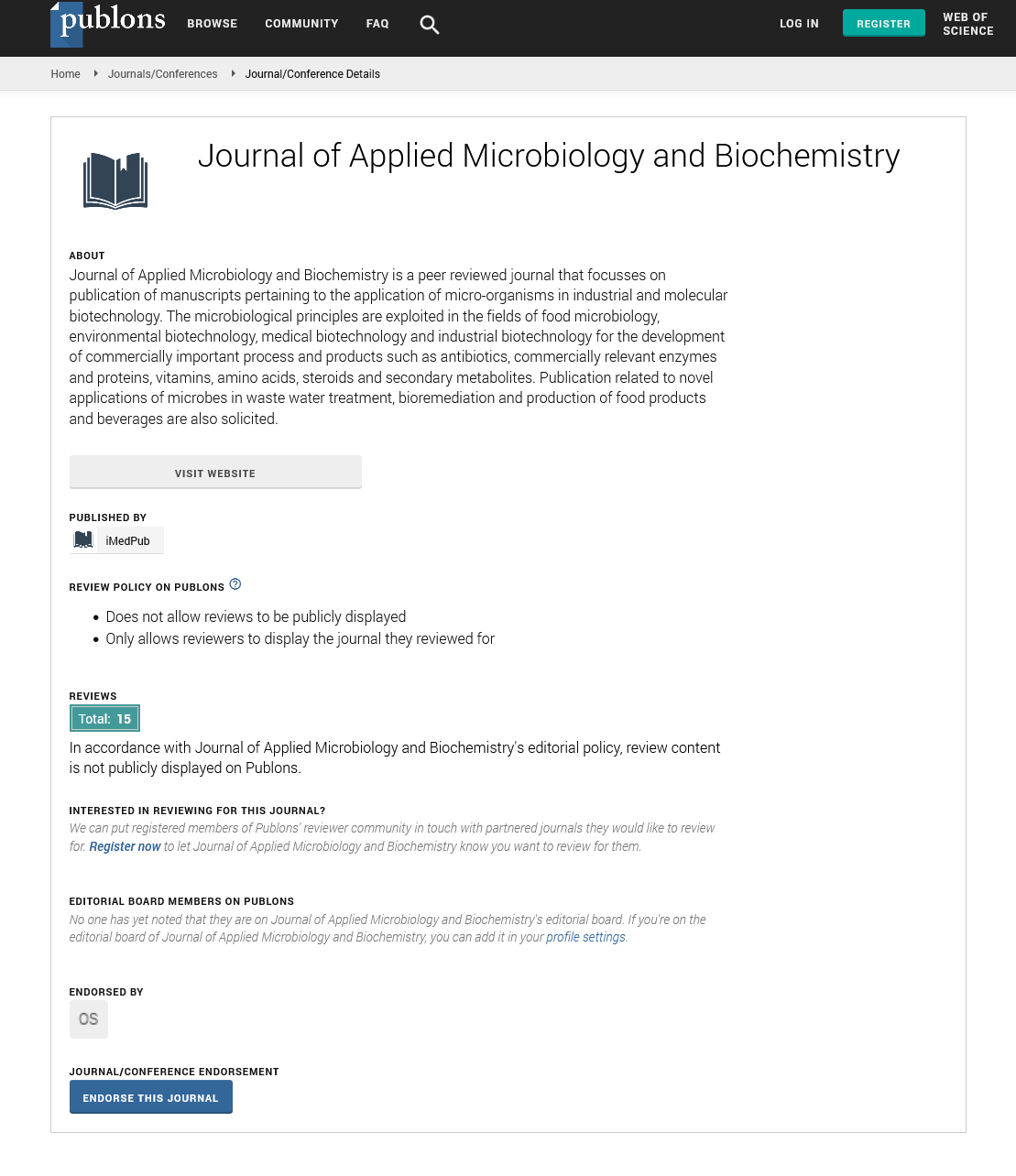ISSN : ISSN: 2576-1412
Journal of Applied Microbiology and Biochemistry
Abstract
In vitro Antimicrobial Activity of Cucurbita pepo on the Selected Bacterial Pathogen and Ethnobotanical Knowledge of the Community at Gara Muleta, Girawa, Eastern Ethiopia
Background: In developing countries, 80% of the population use traditional medicine to meet their primary healthcare needs. Cucurbita pepo is a widely used food and medicinal plant as a natural anti-inflammatory, antiviral, and analgesic agent for treating various public health problems. This study was conducted to evaluate the in vitro antimicrobial activity of Cucurbita pepo on the selected bacterial pathogen and Ethnobotanical knowledge.
Methods: The study was conducted at Gara Muleta, Eastern Ethiopia from April 30 to May 30, 2020. Sixty experimental tests were performed to evaluate the in vitro antimicrobial activity of Cucurbita pepo seed extracts using three extraction methods (water-based, methanol-based, and chloroform) at different concentrations (higher, medium, and lower concentrations). An experimental study was carried out using three standard pathogenic bacteria (Pseudomonas aeruginosa, Staphylococcus aureus, and Escherichia coli) using the disc diffusion and broth dilution techniques. A community-based cross-sectional study was carried out among 384 households in Girawa town to assess the ethnobotanical knowledge of the community regarding Cucurbita pepo.
Results: Water, methanol, and chloroform extracts of Cucurbita pepo seeds showed maximum inhibition zones of 9.0 mm, 12.0 mm, and 10.0 mm and minimum inhibitory concentrations of 18, 24, and 20 mg/mL, respectively, against P. aeruginosa. Of the 384 study participants, 376 (98.2%) of the participants had ethnobotanical knowledge of Cucurbita pepo seeds. However, 240 (62.5%) and 255 (66.4%) of the study participants had no information about the medical use and health benefits of Cucurbita pepo seeds, respectively.
Conclusion: The methanol and chloroform extracts of Cucurbita pepo seeds possessed notable antibacterial activity, but water extract showed no zone of inhibition against E. coli and S. aureus.
Author(s): Mohammed Nasir, Ayichew Seyoum, Zerihun Ataro and Wondimagegn Wolde*
Abstract | Full-Text | PDF
Share This Article
Google Scholar citation report
Citations : 342
Journal of Applied Microbiology and Biochemistry received 342 citations as per Google Scholar report
Journal of Applied Microbiology and Biochemistry peer review process verified at publons
Abstracted/Indexed in
- Google Scholar
- China National Knowledge Infrastructure (CNKI)
- Cosmos IF
- Directory of Research Journal Indexing (DRJI)
- Publons
- Secret Search Engine Labs
Open Access Journals
- Aquaculture & Veterinary Science
- Chemistry & Chemical Sciences
- Clinical Sciences
- Engineering
- General Science
- Genetics & Molecular Biology
- Health Care & Nursing
- Immunology & Microbiology
- Materials Science
- Mathematics & Physics
- Medical Sciences
- Neurology & Psychiatry
- Oncology & Cancer Science
- Pharmaceutical Sciences
